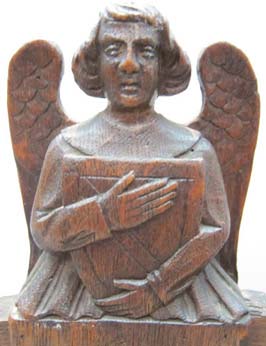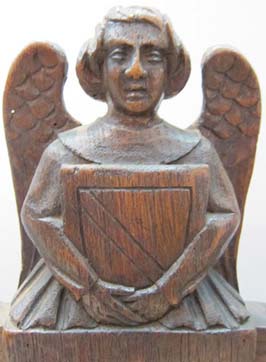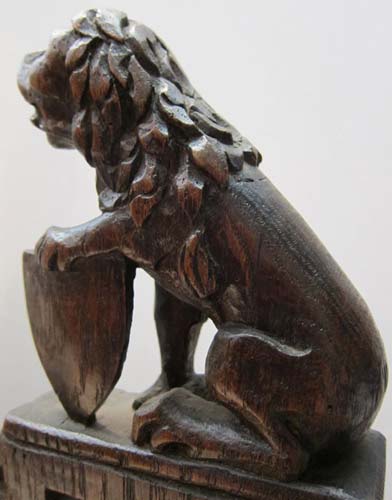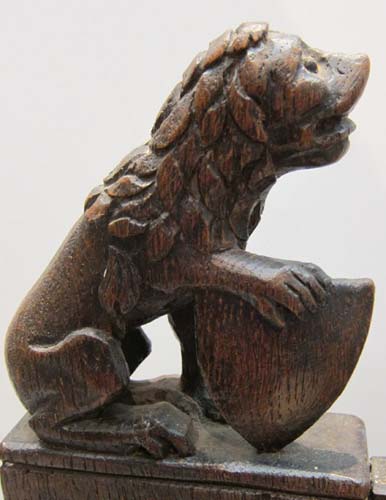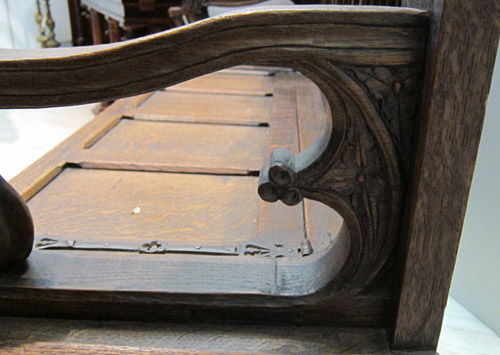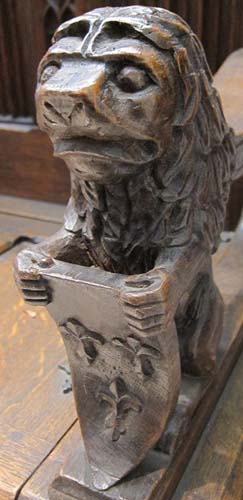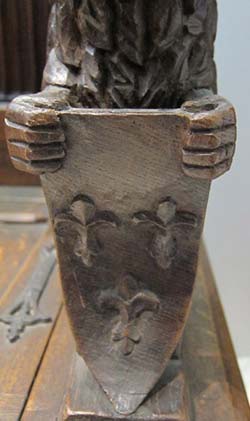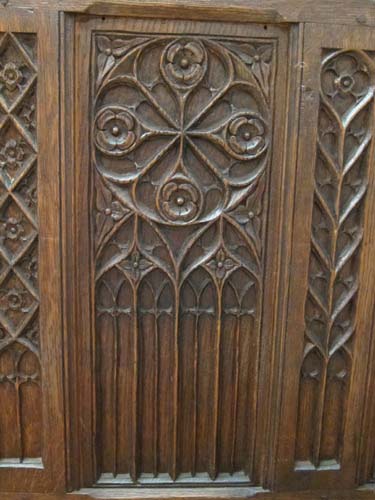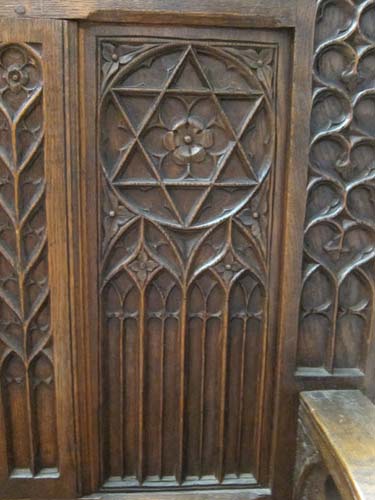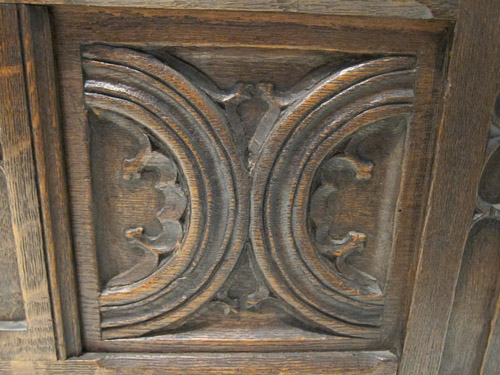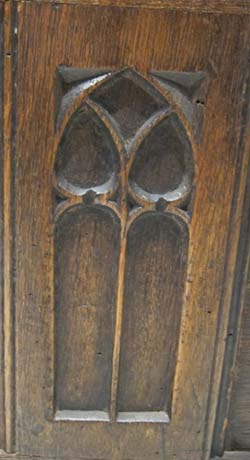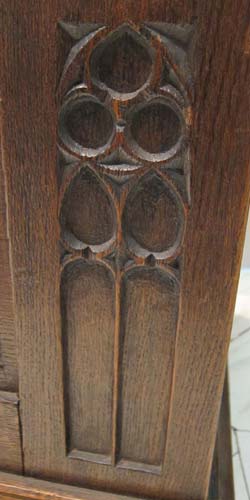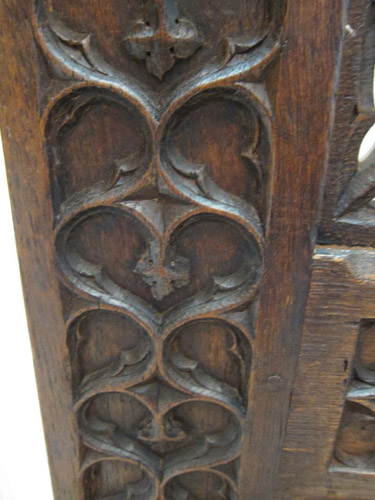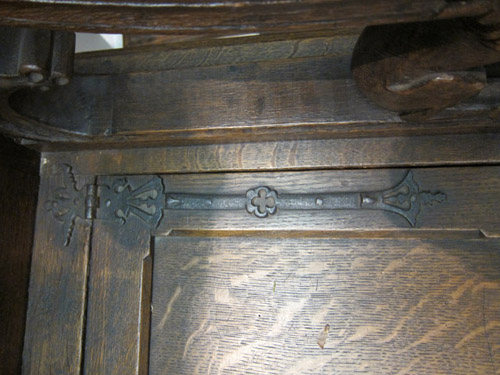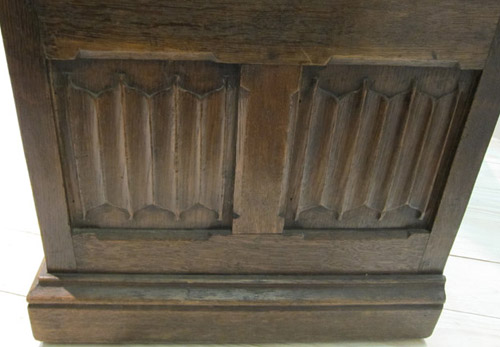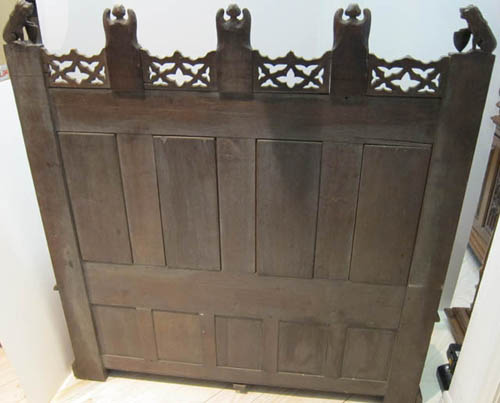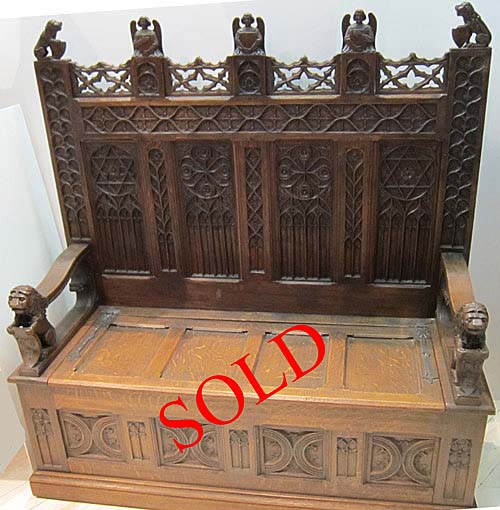
This bench is a feast for the eyes when it comes to decorative elements, imaginatively conceived and beautifully carved, albeit not in the traditional sense. What attracted us to this bench was a number of factors distinguishing it from other wonderful Gothic benches we have offered in the past.
The inclusion of angels and lions in the decorative scheme is very unusual, especially for France and the 19th century revival of earlier Gothic style. While we see numerous examples of angelots or cherubim in 19th Renaissance Revival furniture in France, to see the angel’s head and torso as depicted in this piece of Gothic style furniture is quite remarkable. Each of the three angels atop the back of the bench is distinct. They clutch a shield with simple bar or bend (diagonal) carved into it but the left and middle angels have identical shields (although grasped at different locations) while the right angel’s shield has the bend in the opposite direction. While lacking the sword of the Archangel Michael atop Rome’s Castel Sant’Angelo, these are militaristic, protective angels rather than the angels found in Flemish paintings whose purpose in displaying a shield was to wear the patron’s coat of arms (for example, as part of the Ambierle Altarpiece attributed to Roger van der Weyden at the Church of Saint Martin in Ambierle, France).
At the ends of the top of the bench are lions facing one another and holding shields of their own. Seated on their haunches, their heads slightly tilted and their lips parted, they appear attentive to the angels and poised to assist them. They remind us of the Marzocco carved by Donatello in Florence.
These are not the only lions carved into this bench. Others support the armrests and are in a completely different style. They face forward, their manes intricately carved and patterned, their front paws holding shields. To our surprise, we saw a very similar treatment of a lion while watching The Three Musketeers (2011 movie version) on cable recently. It was on the prow of an airship used by the heroes to beat back their English foes and protect King Louis XIII.
To be historically correct, the art director could have considered including the three fleurs-de-lys as seen on shields held by our lions. This arrangement of the fleur-de-lys in heraldry represented the royal standard of France until the Revolution and then intermittently after the end of the reign of Napoleon I.
The balance of the ornamentation of this bench is decidedly Gothic, based on traditional elements such as fenestrage or tracery. Open tracery connects the pedestals on which the angels and lions sit atop the back of the bench.
The backrest of the bench is comprised of four rectangular panels. The two outermost panels include a six-pointed star, with a flower in the middle, within a circle above lancet arches while the two middle panels are quatrefoils, incorporating the same flower design, again within a circle above lancet arches. Between the rectangular panels are vertical strips based on the same “flower above tracery” motif representing leaves (and also seen in Armoire 5125).
Connecting the lions, at the top of the back, to the armrest supported by lions is a strip using tracery in the shape of overlapping hearts. All of these strips are designed with lancet arches at their bases.
The seat of the bench is unadorned other than square panels inset into the seat, which opens to reveal a generous storage space, and long decorative hinges that attach it to the back.
The side panels are what one would expect to see – linen fold designs filling rectangular spaces. However, the front of the base offers another unique approach to Gothic ornamentation. The basic linen fold has been transformed. Half-moon arcs of wide moulding are filled with crocketed shapes and adorned on the outside with smaller crockets. This is a design we have never seen before and which may be unique to the place where the designer worked, perhaps mimicking a pattern used in local architecture. In any event, it all works well together in a unique and pleasing design.
Reference
Boccador, Jacqueline, Le Mobilier Français du Moyen Age à la Renaissance (Editions d'Art Monelle Hayot, Saint-Just-en-Chaussée, 1988); Thirion, Jacques, Le Mobilier du Moyen Age et de la Renaissance en France (Editions Faton, Dijon, 1998); Viollet-le-Duc, Eugène, Le Mobilier Médiéval (Georges Bernage, editor) (Editions Heimdal, 2003)
Uses
This bench calls attention to its wonderful heraldic elements and would work well in an entryway or foyer to announce its firm adherence to creative and enigmatic design.
